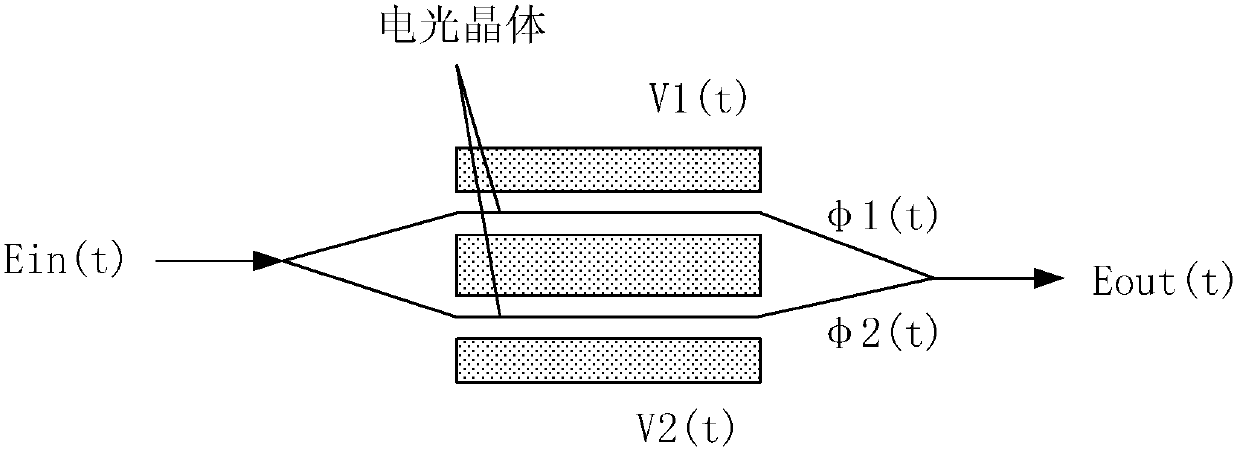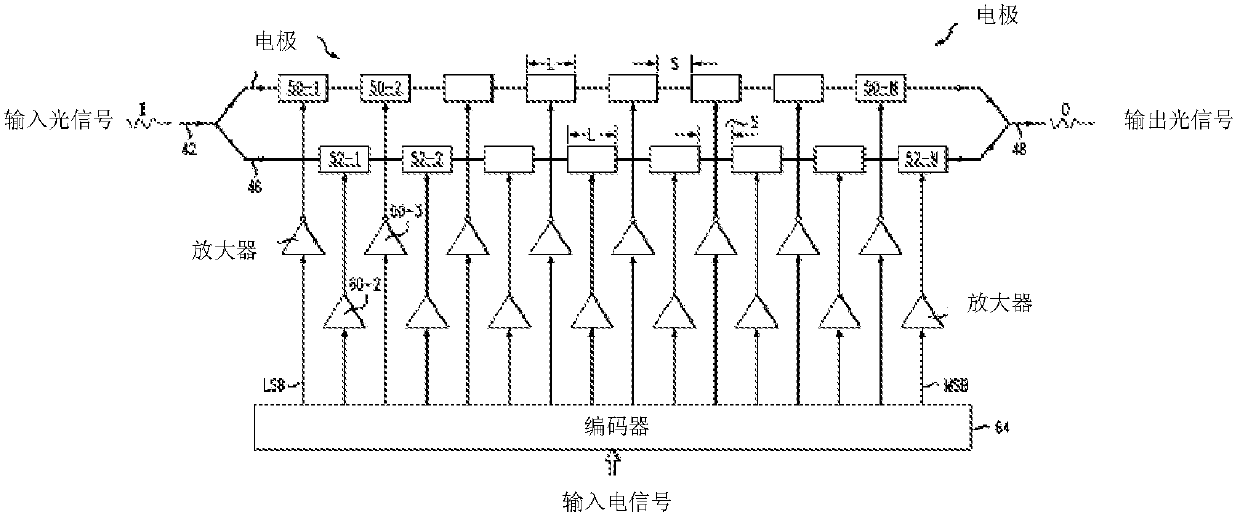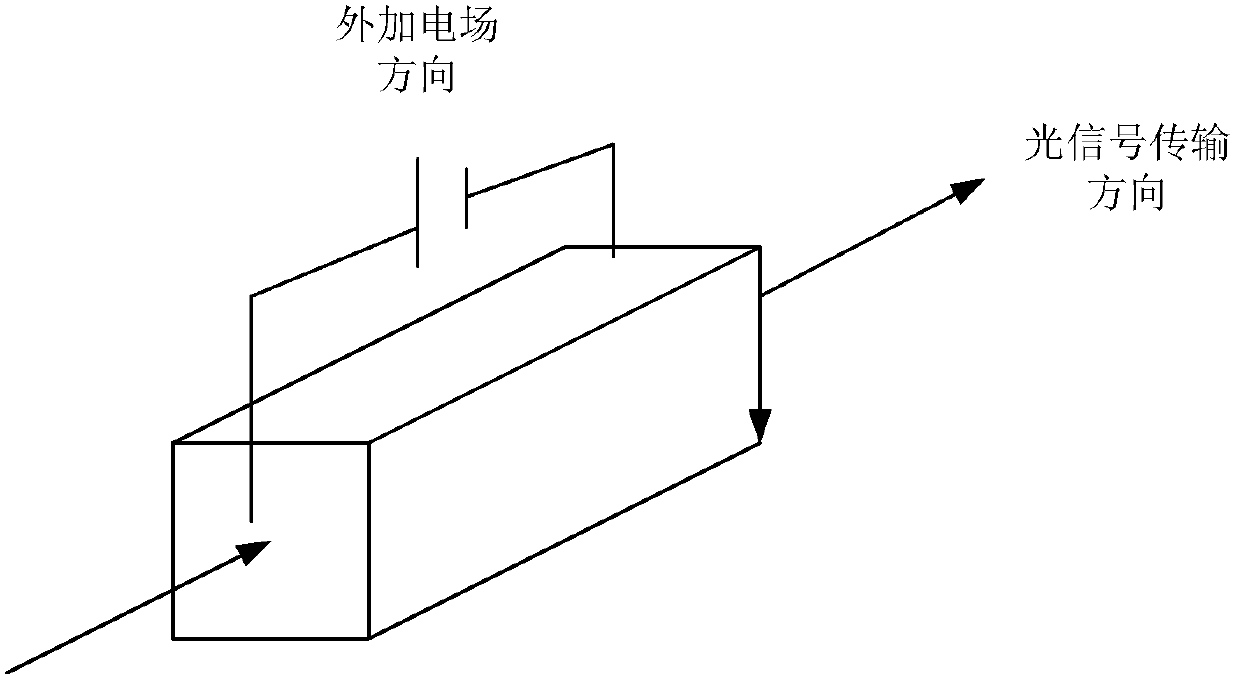An optical signal modulation path, electro-optic modulator and optical transmitter
An electro-optic modulator and optical signal technology, which is applied in the field of optical communication, can solve the problems of adding electrodes, being unfavorable for integration, and having a large number of electrodes.
- Summary
- Abstract
- Description
- Claims
- Application Information
AI Technical Summary
Problems solved by technology
Method used
Image
Examples
Embodiment 1
[0060] Figure 4 It is a schematic structural diagram of Embodiment 1 of an optical signal modulation path in the present invention, the optical signal modulation path is applied to an electro-optical modulator, and the optical signal modulation path includes:
[0061] At least two electrodes are sequentially connected from the optical signal input port to the optical signal output port, and each electrode is used to change the phase of the input optical signal when the external input electrical signal is at a high level.
[0062] Such as Figure 4 In the optical signal modulation path shown, the left end is connected to the optical signal input port, and the right end is connected to the optical signal output port. From the optical signal output port of the optical signal modulation path to the optical signal input port, electrode B 0 , Electrode B 1 , Electrode B 2 ,..., electrode B n-1 A total of n electrodes are sequentially connected to form an optical signal modulati...
Embodiment 2
[0081] In the second embodiment, the material parameters of the electro-optic crystals of each electrode on the optical signal modulation path are different, so as to realize the phase change of the optical signal modulation path Subdivision quantification:
[0082] At least two electrodes are connected in sequence, and the material parameters of the electro-optic crystals of each electrode are different, and the ratio of the material parameters of the electro-optic crystals of the electrodes arranged in the order from the optical signal output port to the optical signal input port is: 1:2:2 2 :...:2 n-2 : 2 n-1 , where n is the number of electrodes. Wherein, the material parameter is the product of the cube of the refractive index of the electro-optic crystal of the electrode and the electro-optic coefficient of the electro-optic crystal of the electrode.
[0083] According to formula (1) and formula (2), it can be seen that when the applied electric field is vertical or ...
Embodiment 3
[0099] In the third embodiment, the electric field width of each electrode on the optical signal modulation path is different when the direction of the electric field is perpendicular to the optical signal transmission direction, so as to realize the phase change of the optical signal modulation path Subdivision quantification:
[0100] At least two electrodes are connected in sequence, and the electric field width of each electrode is different. When the electric field action direction is perpendicular to the optical signal transmission direction, the electric field action direction of the electrodes arranged in the order from the optical signal output port to the optical signal input port is lateral. The ratio of the electric field width is: Wherein, n is the number of electrodes.
[0101] According to formula (2), it can be known that when the applied electric field is transverse (the direction of the applied electric field is perpendicular to the direction of optical si...
PUM
 Login to View More
Login to View More Abstract
Description
Claims
Application Information
 Login to View More
Login to View More - R&D
- Intellectual Property
- Life Sciences
- Materials
- Tech Scout
- Unparalleled Data Quality
- Higher Quality Content
- 60% Fewer Hallucinations
Browse by: Latest US Patents, China's latest patents, Technical Efficacy Thesaurus, Application Domain, Technology Topic, Popular Technical Reports.
© 2025 PatSnap. All rights reserved.Legal|Privacy policy|Modern Slavery Act Transparency Statement|Sitemap|About US| Contact US: help@patsnap.com



